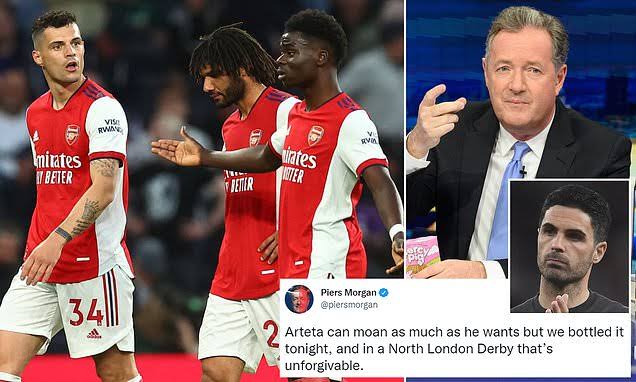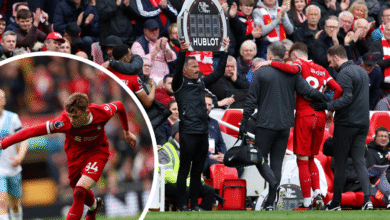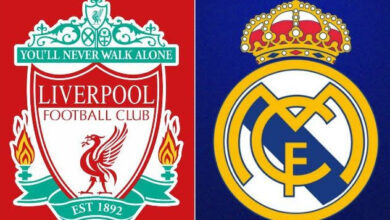Why Manchester City’s Strategic Decision Led to Tottenham’s Gain

The summer transfer window of 2025 has been filled with intrigue, speculation, and surprising twists, but few stories have captured the attention of football fans quite like the Morgan Gibbs-White saga. The 25-year-old midfielder, who has established himself as one of the Premier League’s most promising talents, found himself at the center of a transfer battle that ultimately saw him move to Tottenham Hotspur after Manchester City walked away from what seemed like a done deal.
The story begins with a moment that many football fans will remember – Pep Guardiola’s post-match conversation with Gibbs-White following Manchester City’s FA Cup semi-final victory over Nottingham Forest. That brief exchange, captured on camera and broadcast to millions, sparked months of transfer speculation and set in motion a chain of events that would reshape the midfielder’s career trajectory.
The Genesis of City’s Interest
Manchester City’s interest in Morgan Gibbs-White was not born overnight. The player’s performances for Nottingham Forest throughout the 2024-25 season had caught the attention of several top clubs, but it was Guardiola’s public acknowledgment of the player’s talents that truly ignited the transfer rumors. The Spanish manager, known for his meticulous approach to player recruitment, rarely engages in such public displays of interest unless there is genuine substance behind it.
Gibbs-White’s rise to prominence has been nothing short of remarkable. From his early days at Wolverhampton Wanderers to his breakthrough at Sheffield United and subsequent move to Nottingham Forest, the midfielder has consistently demonstrated the qualities that top-tier clubs covet. His technical ability, vision, and versatility in midfield positions made him an attractive proposition for a Manchester City side always looking to refresh their squad with young, dynamic talent.
The 25-year-old’s performances in the Premier League had been particularly impressive, showcasing his ability to operate as both a number eight and a number ten, roles that are crucial in Guardiola’s tactical system. His creativity, work rate, and ability to contribute both defensively and offensively aligned perfectly with City’s playing philosophy, making him appear to be an ideal fit for the reigning Premier League champions.
The Financial Hurdles
However, as is often the case in modern football, the financial aspects of the potential transfer proved to be more complex than initially anticipated. According to renowned transfer expert Fabrizio Romano, Nottingham Forest’s initial valuation of Gibbs-White was astronomical, with the club reportedly seeking around £100 million for their prized asset. This figure, while reflective of the player’s importance to Forest and the inflated nature of the modern transfer market, represented a significant obstacle for even a club of Manchester City’s financial resources.
The £100 million price tag was not entirely surprising when viewed through the lens of Forest’s perspective. The club had invested heavily in Gibbs-White, and his contributions had been instrumental in their Premier League survival and subsequent stability. From Forest’s standpoint, any club wanting to acquire their star player would need to pay a premium that reflected both his value to the team and the difficulty of finding a suitable replacement.
As negotiations progressed, or perhaps stalled, the asking price eventually dropped to £70 million, a reduction that still represented a substantial investment for any potential suitor. However, even this reduced figure came with its own set of complications, particularly when considering the broader context of Manchester City’s transfer strategy for the summer window.
The Marinakis Factor
Another significant factor in Manchester City’s decision-making process was the anticipated difficulty of negotiating with Nottingham Forest’s owner, Evangelos Marinakis. The Greek shipping magnate, who also owns Olympiakos, has earned a reputation as a tough negotiator who is unwilling to sell key players unless his demands are met in full. Marinakis’s approach to player sales has often been characterized by his insistence on maximum value extraction, a stance that can make negotiations protracted and complex.
Manchester City’s hierarchy, experienced in dealing with various types of negotiations, recognized that any discussions with Marinakis would likely be challenging and time-consuming. With the club’s participation in the FIFA Club World Cup looming, time was of the essence in securing new signings. The prospect of entering into lengthy negotiations with a notoriously difficult negotiator presented a risk that City’s management was ultimately unwilling to take.
This strategic consideration highlights the often-overlooked human element in transfer negotiations. While fans and media focus primarily on transfer fees and player abilities, the personalities and negotiating styles of club owners and executives can play a crucial role in determining whether deals are completed or abandoned.
City’s Strategic Pivot
Rather than pursuing the potentially complicated and expensive acquisition of Gibbs-White, Manchester City opted for what Romano described as a “different strategy.” This approach involved spreading their available resources across multiple positions rather than concentrating a significant portion of their budget on a single player, regardless of his quality.
This strategic decision led to the acquisitions of Tijjani Reijnders and Rayan Cherki, two players who, combined, could address multiple needs within Guardiola’s squad. The Dutch midfielder Reijnders, who had already proven his worth at AC Milan, offered versatility and proven European experience, while the young French talent Cherki brought creativity and flair to the attacking midfield positions.
Guardiola’s preference for squad depth and tactical flexibility has been a hallmark of his successful tenure at Manchester City. Rather than relying on individual brilliance, the Spanish manager has consistently built teams that can adapt to different tactical situations and cope with injuries or suspensions to key players. The decision to sign two players instead of one expensive acquisition reflects this philosophy perfectly.
The Tottenham Alternative
While Manchester City was reassessing their transfer strategy, Tottenham Hotspur emerged as a serious contender for Gibbs-White’s signature. The North London club, under the guidance of their management, saw an opportunity to acquire a player who could significantly enhance their midfield options and provide the creativity and energy that their system demanded.
Tottenham’s interest in Gibbs-White was not merely opportunistic; it represented a strategic move to strengthen their squad with a player who possessed both Premier League experience and the potential for further development. The midfielder’s age profile, at 25, positioned him perfectly for a club looking to blend experience with ambition.
The successful completion of Gibbs-White’s move to Tottenham demonstrated the club’s commitment to backing their manager with quality acquisitions. For Spurs, securing a player who had been courted by Manchester City represented not just a squad improvement but also a statement of intent regarding their ambitions for the upcoming season.
Comparing the Alternatives: Reijnders vs. Gibbs-White
The decision to pursue Tijjani Reijnders instead of Morgan Gibbs-White inevitably invites comparison between the two players. Both midfielders operate in similar areas of the pitch, favoring the number eight role while possessing the technical ability to function as attacking midfielders when required.
Reijnders, at 26, brings a wealth of experience from his time in Serie A with AC Milan, where he established himself as a key player in one of Europe’s most tactical leagues. His statistical output from the 2024-25 season was impressive, with 15 goals and 5 assists in 57 appearances across all competitions. These numbers reflect not only his goal-scoring ability but also his durability and consistency throughout a long season.
In contrast, Gibbs-White’s statistics from the same period show 7 goals and 10 assists in 38 appearances, totaling 3,142 minutes of playing time. While his goal tally was lower than Reijnders’, his assist numbers were significantly higher, suggesting a player more focused on creating opportunities for teammates rather than finishing chances himself.
The Dutch midfielder’s versatility has been one of his standout qualities, with his ability to play multiple midfield positions providing tactical flexibility that managers value highly. His experience in high-pressure situations, including Champions League football, gives him an edge in terms of proven performance at the highest level.
However, Gibbs-White’s numbers must be viewed in context. Playing for Nottingham Forest, a team that typically has less possession and fewer attacking opportunities than AC Milan, his creative output becomes even more impressive. His ability to generate assists despite his team’s often defensive approach suggests a player capable of making a significant impact regardless of tactical constraints.
The Cherki Addition
Manchester City’s acquisition of Rayan Cherki represents the second part of their strategic approach to midfield reinforcement. The young French talent, known for his creativity and technical ability, addresses the need for a more specialized attacking midfielder while providing cover for multiple positions across the forward line.
Cherki’s addition to the City squad demonstrates Guardiola’s continued faith in young talent and his willingness to develop players who may not yet be finished products but possess the raw materials for future success. The combination of Reijnders’ experience and Cherki’s potential creates a balanced approach to squad building that addresses both immediate needs and long-term planning.
This dual acquisition strategy allows Manchester City to maintain their competitive edge while building for the future. Rather than investing heavily in a single player who might struggle to adapt to their system, they have acquired two players whose combined contributions could exceed what any individual signing might provide.
Fan Reactions and Future Implications
The reaction from Manchester City fans to missing out on Gibbs-White has been mixed, with many expressing concern that the club may come to regret their decision. The midfielder’s subsequent move to Tottenham has only intensified these feelings, particularly given the rivalry between the clubs and the potential for Gibbs-White to prove his worth in direct competition against City.
However, the club’s supporters should take comfort in the strategic thinking behind the decision. Manchester City’s success under Guardiola has been built on careful squad planning and tactical flexibility rather than relying on individual star players. The additions of Reijnders and Cherki align with this philosophy and provide the manager with more options for rotation and tactical variation.
The long-term implications of this decision will only become clear as the season progresses. If Reijnders and Cherki successfully integrate into City’s system and contribute to the team’s success, the decision to pursue multiple signings rather than one expensive acquisition will be vindicated. Conversely, if Gibbs-White excels at Tottenham and becomes a key player in their success, questions may be raised about City’s transfer strategy.
Conclusion
The Morgan Gibbs-White transfer saga serves as a fascinating case study in modern football’s transfer market dynamics. It highlights the complex interplay between financial considerations, negotiating personalities, and strategic planning that influences major transfer decisions. Manchester City’s decision to walk away from the deal, while disappointing to some fans, demonstrates the club’s commitment to a broader strategic vision rather than pursuing individual targets at any cost.
The successful completion of Gibbs-White’s move to Tottenham represents a significant coup for the North London club and provides them with a player capable of making an immediate impact. For Manchester City, the acquisitions of Reijnders and Cherki offer different but potentially equally valuable contributions to their squad depth and tactical flexibility.
As the 2025-26 season unfolds, the success or failure of these various transfer decisions will be measured not just in individual performances but in how they contribute to their respective teams’ overall objectives. The Morgan Gibbs-White saga reminds us that in football, as in life, sometimes the paths not taken are as significant as those pursued, and the true wisdom of transfer decisions often only becomes apparent with the passage of time.
The story also underscores the importance of strategic thinking in modern football management. While the allure of signing a high-profile player is undeniable, the most successful clubs are those that maintain a clear vision of their long-term objectives and make decisions that align with those goals, even when it means walking away from seemingly attractive opportunities.
Ultimately, the Morgan Gibbs-White transfer saga will be remembered as a defining moment in the 2025 summer transfer window, illustrating the complex decision-making processes that shape the modern game and the strategic considerations that influence even the most well-resourced clubs in their pursuit of success.














